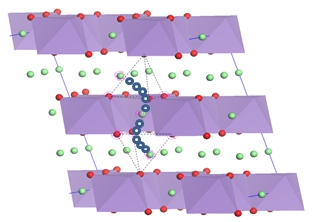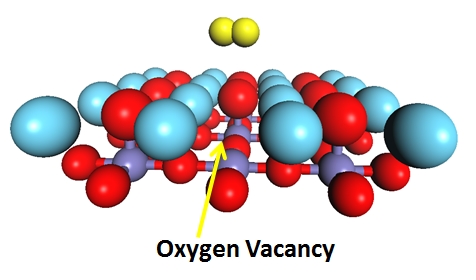The above figure shows an example of direct calculation of diffusion carriers and ionic conductivity in Li2CO3 as a function of voltage in Li-ion batteries, J. Phys. Chem. C, 2013, 8579.
Defect mediated diffusion greatly affects the power performance of battery and fuel cell devices. Using density functional theory (DFT) informed thermodynamics, we can identify the dominant diffusion carriers and their diffusion pathways as a function of voltage, pressure, temperature, and strain. Thus, new materials with dopants can be tested and operating conditions can be optimized.
Currently, we are designing high energy density cathode materials (figure below shows Li-rich layered oxides) and artificial solid electrolytes interphase (SEI) preventing capacity loss for Li-ion batteries.

We also design catalyst at desired strain state to achieve low operating temperature for solid oxide fuel cells.

Related Publications:
- “Direct Calculation of Li-ion Transport in the Solid Electrolyte Interphase”, S.Q. Shi, P. Lu, Z. Liu, Y. Qi, L.G. Hector, H. Li, S.J. Harris, J. Am. Chem. Soc. 134, 15476 (2012)
- “Using Atomic Layer Deposition to Hinder Solvent Decomposition in Lithium Ion Batteries: First-Principles Modeling and Experimental Studies”, K Leung, Y. Qi, K.R. Zavadil, Y.S. Jung, A.C. Dillon, A.S. Cavanagh, S.H. Lee, and S.M. George, J. Am. Chem. Soc. 133, 14741, (2011)
- “Defect thermodynamics and diffusion mechanisms in Li2CO3 and implications for the solid electrolyte interphase in Li-ion batteries”, S. Shi, Y. Qi, H. Li, L.G. Hector, J. Phys. Chem. C 117,8579 (2013)
Members:
Christine James, Tridip Das (co-advised by Dr. Jason D. Nicholas)
Support:


